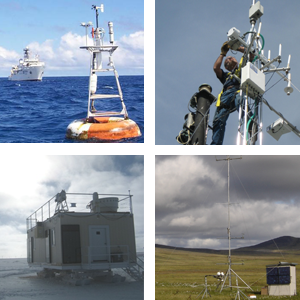
Weather & Climate Physics Branch Overview
Understanding and improving our predictions of weather and climate is vital for our nation's communities, economies, and ecosystems. Weather and climate affects decisions made across local and daily timescales to global and long-term outcomes. Yet much remains to be learned about climate and weather systems, one of the grand science challenges within NOAA and for society in general.
The Physical Sciences Laboratory's Weather and Climate Physics Branch (PSL3), led by Dr. Chris Fairall, focuses on scientific and technological innovation that advances weather and climate science in NOAA. PSL3's team of roughly 30 scientists, engineers, and support staff facilitate and conduct research focused on improving scientific understanding and prediction of weather and climate. This requires expertise on processes affecting weather and climate, developing and using world-class observing systems, obtaining weather and climate measurements, and advancing numerical modeling techniques to better understand air-sea, air-ice, and air-land interactions, boundary layer and cloud dynamics, hurricane physics, and Arctic processes.
To pursue these challenges, PSL3 is organized into three branches: the Boundary Layer Processes and Applications Branch led by Dr. Jim Wilczak; the Multiscale Interactions Branch co-led by Drs. Cecile Penland and Alexander Voronovich; and the Polar Observations and Processes Branch led by Taneil Uttal.